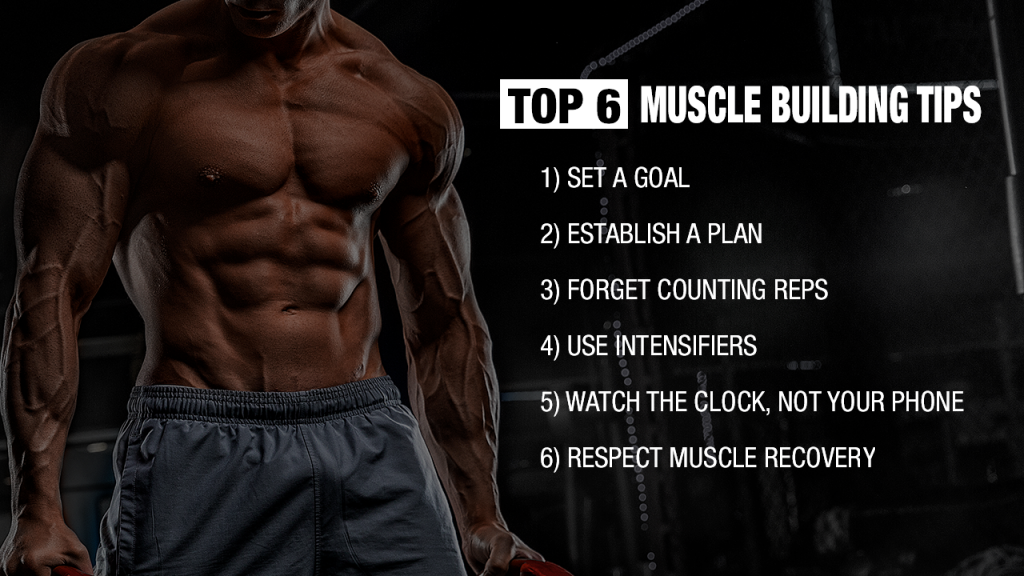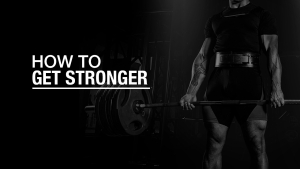
HOW TO BUILD MUSCLE
There’s a hard truth that no one wants to hear when it comes to the muscle building process:
There are no shortcuts, magical solutions, or heavily guarded industry secrets for building muscle.
Now with that said, there ARE proven pieces of bodybuilding advice that result in more muscle mass every single time. In fact, most of this advice is going to push you outside of your comfort zone. Not because it’s difficult, but because it seems like common sense.
And that’s the thing: Most of you hear advice on how to train for muscle gain and if it’s too simple, you get skeptical.
Guys, something doesn’t have to be complicated to work. In fact, if you look at muscle building efforts over the years, the foundational principles have remained more-or-less the same for decades.
Take compound exercises as an example. Name a recently “discovered” exercise that beats the squat, deadlift, and bench press when it comes to muscle development.
You can’t. The classics are dubbed as such because a classic never dies.
You can buy all the newest gear and tech you want, but nothing beats the classic and effective approach to muscle hypertrophy along with good old-fashioned dedication and hard work.
If you want to build muscle but you haven’t seen the results you want, it’s time to rethink your approach.
Let’s jump into my muscle building 101 course. I’m going to cover the most important things you need to focus on when it comes to building bigger muscles and maximizing muscle hypertrophy.
No gimmicks or phony shortcuts needed here! Just pure muscle building science to help you get over the hump and start packing some size on your frame.
WHAT IS YOUR EXACT GOAL?
If you want muscle, you have to get intense with your strength training workout.
Now I don’t mean you have to get psyched up. Yeah, there’s a time and place for that.
But I’m talking about how intensely focused you are on achieving your goals of muscle size and strength.
You probably already know there’s more to building muscle than just showing your face in the weight room when it comes to reaching those muscle growth goals. If you want to put on maximum muscle size, you first need to define exactly how much muscle.
Do you want to gain 5, 10, or 15 pounds of muscle?
Are you trying to improve body composition?
Are you looking to build lean muscle and have shredded muscle definition like you’d see in the physique competition at a bodybuilding show?
Or do you want some power and strength to go behind that muscle – something more like a powerlifter or a Strongman competitor?
Think about the physique you want and define how far you are from that body.
It’s also important to be realistic with your muscle building efforts.
If you’re a hardgainer and you think you want to gain 30 pounds of lean muscle mass, you might need to start with a smaller goal of 5 to 10 pounds, for example. If you can reach the smaller goal, you can assess where you are and set a new target.
As a general reference, most people can expect to put on about one or two pounds of muscle per month (a quarter to a half a pound of muscle per week).
This amount can vary significantly based on a number of individual factors like genetic potential, nutrition, and recovery – which I’ll discuss more below.
Finally, one thing I like to stress is to write that goal down. Not on your computer. Get up, grab some paper and a pen, and write down what you want to look like.
The more detailed your goal, the more exact you can be, the better.
WHAT’S YOUR PLAN TO BUILD MUSCLE?
Muscle growth starts with a plan.
No successful lifters have ever built significant amounts of muscle size without having a plan for getting there.
An effective muscle building program details more than what you are going to do in the gym that day – although that is a great start. Your training plan needs to detail how this strength training workout is going to impact the next one and the next one after that.
You need to have a map for getting to your goal and it starts with knowing what steps you are going to take from one workout to the next.
The last thing you want to do in the weight room is just wander around. I see people walk into the gym and they’re doing what they like to call “instinctive training”. They may be hitting some of the major muscles, but they don’t have an effective approach for their weekly workouts, training volume, adequate rest, etc.
Here’s the big problem: They aren’t making choices based on how each exercise complements another. Instead, they are choosing things based on convenience, simplicity, or ease of difficulty. Or they walk onto the gym floor and do whatever machine is close to another with no real plan. Sure, that’s instinctive, but not in a good way.
You need to have a rock-solid resistance training plan that features resistance exercises that make sense for optimal muscle growth.
And if your goal is hypertrophy, you also have to understand that there is an element of muscle strength that needs to lay at the base of that. That’s right, strength training and muscle building go hand-in-hand – you’ll have to build strength while you build lean muscle.
Let me give you an example to tie everything together:
It’s an upper body workout day, and you want to do back exercises.

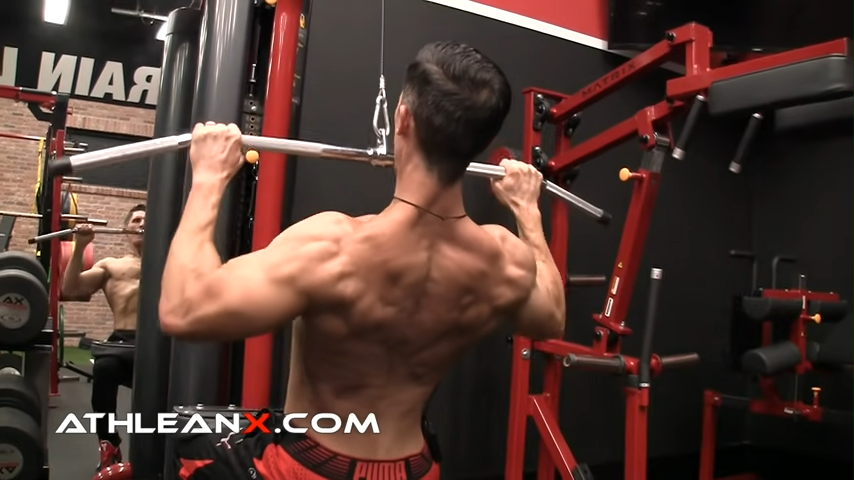
You figure you’ll focus on pull-ups and lat pull-downs and that’ll take care of upper body strength.
I have a few questions for you:
- Where are you working in your horizontal plane?
- When are you changing the planes around?
- Are you just overlapping strength curves?
- Should you be mixing in cables with dumbbells?
- What are some other compound exercises you will perform to fully target the back and surrounding muscle groups?
The point is that successfully building lean muscle takes more than random exercises that seem to go together.
Hey, maybe you’ve seen an exercise I’ve done on this channel that looked appealing – it looked creative, it looked fun, you wanted to try it out – but there’s got to be more to it than that. Does the exercise you’re choosing fit into the bigger picture of your strength training program?
First, I’d say you have to commit to the basics: the compound movements with heavier weights.

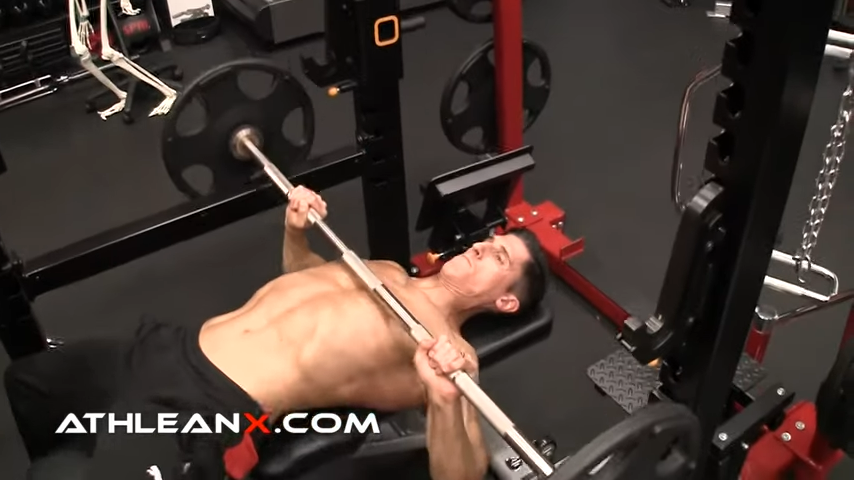
Compound exercises include the classics: squats, deadlifts, bench presses, rows, and overhead presses.
You’ll pair compound exercises with progressive overload.


Progressive overload is when you incrementally increase one of several variables in a resistance training program.
For example, you can increase the amount of weight you lift, the number of sets, or shorten your rest breaks. Together, these elements will build a foundation of strength.
Why focus on getting stronger when you want to build muscle mass?
Because you’re going to need the strength to ultimately help you get as big as possible. Get stronger, lift more, and build more size. And compound exercises are the best way to do just that.
Unfortunately, so many people are hyped up to hit the heavy weight and they overlook important elements of muscle hypertrophy, namely not having a plan.
You need to have a plan, and everything starts from there.
FORGET THE NUMBERS – FOCUS ON EFFORT
With your plan in place, it’s time to put in some serious effort.
As you’re lifting weights, think about this: Are you simply going through the motions, counting to 10 or 12? Or are you pushing with every bit of effort, and your rep count is an afterthought?
I hope it’s the latter because this is your BIGGEST opportunity for growth. If you blow this, you’re not going to grow and all of your strength training activities will go to waste.
When it comes to weight training for more muscle size you need to realize that your effort will dictate everything. Overload is critical.
Here’s an example of what I’m talking about: Let’s say you’re performing an incline dumbbell bench-press.

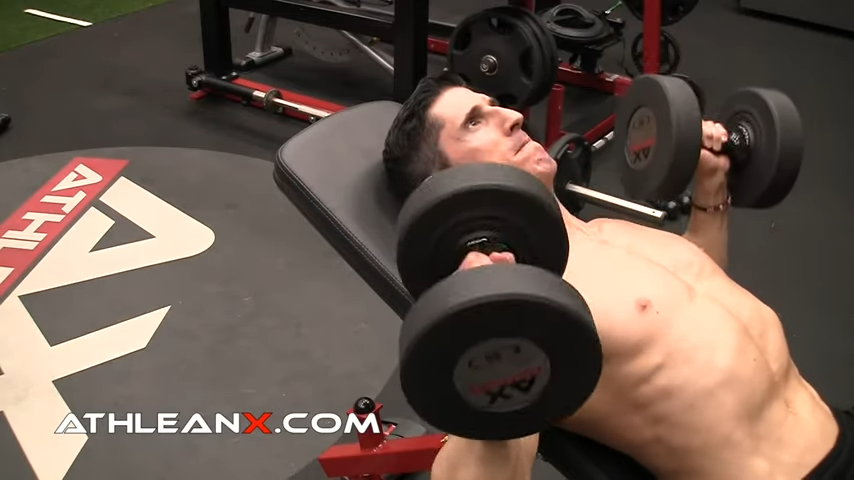
The first thought in your head shouldn’t be, “Oh, I have to complete 12 repetitions.” The first thought in your head MUST be, “I’m going to give this set everything I have while maintaining proper form.”
Guys, the recommended repetitions for an exercise are a general guideline – they are not concrete.
The reality is that you can grow with only seven or eight repetitions if the effort and perfect form are there.
When it comes to training for more muscle size you need to realize that your effort will dictate everything. Overload is critical.
Are you stopping just because you hit a number?
That’s a major mistake.
Instead, let your effort guide you and push as hard as you can. But don’t forget to keep your form in check.
Try to accomplish something in this set that you’ve never accomplished before, but don’t beat yourself up if you have an off day.
LOAD UP ON INTENSIFIERS
Effort is naturally going to promote serious intensity.
But it can be pretty generic and vague to just say, “Give it more effort.”
If you’re doing it right, you should have an arsenal of intensifiers that provide you with the opportunity to give it your all and crank up the intensity.
Continuing with the example from above, one of my favorite intensifiers a very effective approach: the rest-pause technique.

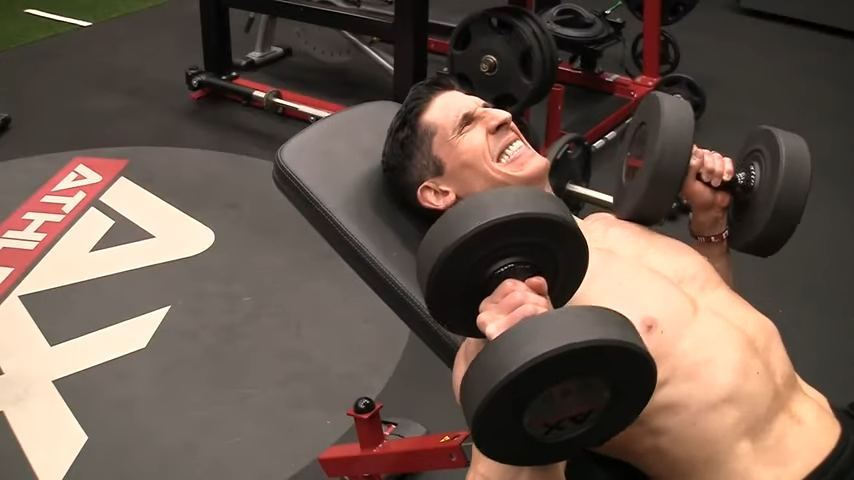
The rest-pause technique type of strength training allows me to rest for a brief moment to recoup, to regroup, and to get back a little bit of strength so I can push through another couple of reps. With each additional rep that I can perform, I’m providing my muscles with the needed stimulus for overload and growth.
There are plenty of options for advanced lifters when it comes to adding intensifiers to your workout including super sets, forced reps, negatives, and drop sets.
For example, you can perform a super set of one weighted type of exercise immediately followed by one body weight exercise – both targeting the same muscle group.
Your mind is way stronger than what your body is willing to give it. You’ll be surprised at what will come out of your body.
WATCH THE CLOCK, NOT YOUR PHONE
Once your set is done, what are you doing with your time?
This is where many people fall off the path.
If you sit around and let far too much time pass between sets then you are dramatically decreasing the effectiveness of the workout.
Rest times should be prescriptive and serve to keep your muscle fibers stressed for the entire workout. They should not be looked at as times to jump on social media because it will take you out of the frame of mind necessary for building muscle.

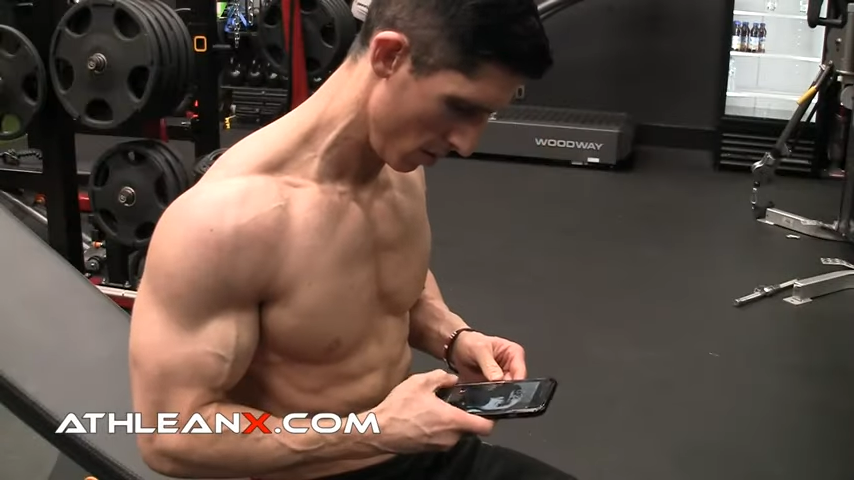
The only reason you should be taking out your phone is to set the timer. After that, make sure that you’re getting your ass back on the bench to do the next set exactly when the timer tells you to.
If you’re training for hypertrophy, limit yourself to 60 to 90 seconds of rest. You’ll be surprised – for those guys that like to go on the phone – how fast that comes around.
I want you prepared, and ready for the next set so when the timer goes off, you’re going into the next set.
If you’re training for strength, on the other hand, you’ll want to extend those rest periods. A proper rest period for strength training is more like 3 to 5 minutes.
Neurologically, this allows your body to recover so you can come back and attack that next set of your 1 to 3 rep max with a lot more intensity.
But don’t train with a rate and intensity that’s appropriate for hypertrophy and rest for strength. And don’t train for strength and rest for hypertrophy.
Your training plan should include rest periods as much as it does working sets.
RESPECT YOUR MUSCLE RECOVERY
The only way to build bigger muscles is to allow your body to recover between intense workouts.
And guess what. This repair process simply can’t happen if you aren’t prioritizing it. In fact, recovery is so important that even if you get everything else right, you will ruin your chance to grow if you skip recovery.


Here are the key areas that you need to focus on for optimal recovery.
NUTRITION
Growing skeletal muscle requires a healthy diet with plenty of high protein foods. Protein-rich food provides plenty of essential amino acids, the building blocks of muscle tissue.
While it’s not a universal number, when it comes to muscle building diets, a rule of thumb is that many people see great results when they consume a protein intake of about .75 to 1 grams of protein per pound of body weight daily for adults.
For example, if you weigh 165 pounds, you might want to consume around 165 grams of protein per day.
And for counting calories, there are about 4 calories per gram of lean proteins. Extra calories from healthy whole food sources make a big difference when you want to put on size, and you may need to be in a calorie surplus to continue to build muscle over time.
On the other hand, if you wanted to lose weight or excess body fat, you would aim for a calorie deficit – burning more calories per day than you consume. This would mean that your daily calorie intake would need to be fewer calories than you burn, or achieve additional calorie burn through exercise and functional movement or both to achieve that calorie deficit.
Meat is a great source of protein, but it’s not your only option. Great sources of proteins include:
- Chicken breasts
- Grass-fed beef / steak
- Eggs / Egg whites
- Salmon
- Tuna
- Greek yogurt
- Cottage cheese
- Mixture of plant-based proteins such as lentils, quinoa, and pumpkin seeds
Eating plenty of protein from a variety of protein sources probably isn’t a surprise to you, but you need to also eat balanced meals. What may surprise you is what you need to be eating as far as carb intake and fat intake. You definitely need a balanced diet to build muscle, and you need to be sure you’re eating enough daily calories in general to avoid muscle loss.
And here’s the thing: Macro count in diets varies from person to person.
Some guys will need to eat a lot more carbohydrates because they are hardgainers while other guys need to up their intake of healthy fats.
This is where it really pays to chat with a nutritionist or registered dietician, someone who can review your medical history, body type, and preferences and create a perfect muscle building nutrition planner.
SUPPLEMENTS
I know protein shakes are delicious, but if it’s between a shake and a plate of grilled chicken, brown rice, and veggies, you better go with the latter.
Dietary supplements should never replace whole food meals but they can be great additional protein intakes or help you achieve a calorie surplus or calorie deficit.
They can play an important role in your muscle building journey to help ensure you’re getting adequate protein in your diet.
Whey protein is the go-to supplement for post-workout nutrition since it delivers a quick shot of amino acid to the muscle tissue that desperately wants it.
And these amino acids support muscle protein synthesis, an important process for growth.
SLEEP
Lastly, you need to stop binging on Netflix and get adequate sleep to help with muscle repair throughout the entire body.
The more active you are, the more sleep you probably need. At the bare minimum, try to sleep no less than seven hours of sleep each and every night for your health and recovery.
All of these things will dramatically impact your ability to either really recover from your training, or not recover from your training at all.
Recovery might seem boring, but it’s just as impactful on the overall picture as your training. Training with sore muscles doesn’t work out well.
There is simply no way around hard work when you are trying to build muscle.
It’s going to require intense focus on making sure that you’re not overlooking any critical elements such as a workout plan, all-out effort during workouts, and recovery.
If you’re feeling overwhelmed about creating the “perfect” training program, not to worry! I’ve got you covered with tons of ATHLEAN-X training plan options depending on your fitness level and specific goals.

- Define exactly how much muscle mass you want to gain. You should also have a crystal-clear and realistic vision in your mind of how you want to look once you accomplish your goal. If you have extra body fat to lose, body composition goals should be taken into account as well.
- Find or create a plan that allows you to achieve that goal. Each part of the program should be carefully calculated and complementary to each exercise, rest period, etc.
- Bring effort and intensity to every rep and you’ll start to see those noticeable changes from your hard work.
- Use intensifying techniques (e.g., drop sets, forced reps, negatives, super sets, etc.) in your strength training sessions to tap into the reserves that your body was hanging onto to achieve the needed overload for growth.
- Rest for no more than 90 seconds when you’re training for size. If you want to get stronger, give yourself about three minutes of rest time.
- Prioritize your recovery to allow the muscle repair process to occur – Have a plan for proper nutrition, supplements, and sleep.
REFERENCES

Jeff Cavaliere M.S.P.T, CSCS
Jeff Cavaliere is a Physical Therapist, Strength Coach and creator of the ATHLEAN-X Training Programs and ATHLEAN-Rx Supplements. He has a Masters in Physical Therapy (MSPT) and has worked as Head Physical Therapist for the New York Mets, as well as training many elite professional athletes in Major League Baseball, NFL, MMA and professional wrestling. His programs produce “next level” achievements in muscle size, strength and performance for professional athletes and anyone looking to build a muscular athletic physique.
















